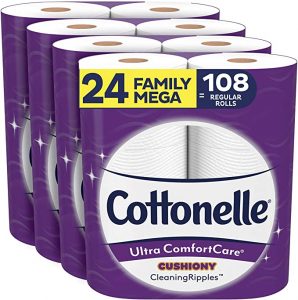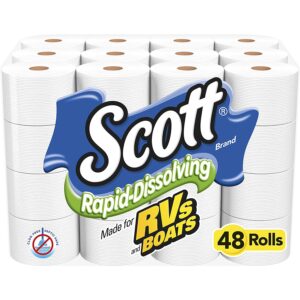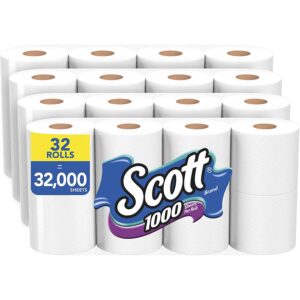Let’s talk about something we don’t like to discuss in daily conversations but plays a crucial role in our lives – toilet paper. Specifically, we’re going to focus on a rather important topic: finding the best toilet paper for septic tanks. With so many options available, it’s essential to choose wisely to avoid potential plumbing disasters. In this article, we will explore the characteristics that make toilet paper septic-safe and provide practical tips for selecting the perfect option for your system. By the end, you’ll be armed with the knowledge to ensure your septic tank stays happy and healthy, and you can have peace of mind every time you reach for the roll.

Types of Toilet Paper
When it comes to choosing toilet paper for your septic tank, it’s important to consider the different types available on the market. The most common types of toilet paper include 1-ply, 2-ply, and 3-ply. Each type has its own pros and cons, so let’s take a closer look at each one.
1-ply Toilet Paper
1-ply toilet paper is the most basic type available. It is made up of a single layer of paper, which means it is thinner and less absorbent than other options. While 1-ply toilet paper may be more affordable, it also tends to be less soft and less durable compared to other types. However, if your main concern is finding a toilet paper that is septic-safe, 1-ply options are often the best choice. The thinner sheets tend to break down more easily, reducing the risk of clogging your septic system.
2-ply Toilet Paper
2-ply toilet paper is a step up in terms of thickness and softness. It is made up of two layers of paper bonded together, providing a more comfortable feel. 2-ply toilet paper is generally more durable than 1-ply, which means you won’t need to use as much per wipe. However, because it is thicker, it may take longer to break down in your septic tank compared to 1-ply options.
3-ply Toilet Paper
3-ply toilet paper is the thickest and most luxurious option available. It is made up of three layers of paper, providing an incredibly soft and cushioned feel. While 3-ply toilet paper may offer the highest level of comfort, it is also the least septic-safe option. The extra layers make it more difficult to dissolve in water, increasing the risk of clogging your septic tank.
Characteristics of Septic-Safe Toilet Paper
When selecting toilet paper for use with a septic system, there are several important characteristics to consider. These characteristics will help ensure that the toilet paper you choose is compatible with your septic tank.
Biodegradable
One of the most important characteristics to look for in septic-safe toilet paper is biodegradability. This means that the toilet paper is made from materials that can break down naturally over time. Biodegradable toilet paper is crucial for septic systems as it breaks down more easily in the tank, reducing the risk of blockages and ensuring the smooth operation of your septic system.
Quick Dissolving
In addition to being biodegradable, septic-safe toilet paper should also be quick dissolving. This means that the toilet paper breaks apart into small pieces as soon as it comes into contact with water. Quick-dissolving toilet paper is essential for preventing clogs in your septic system. Look for toilet paper that is specifically labeled as quick dissolving or septic-safe.
Low Linting
Lint from toilet paper can also cause problems for septic systems. Excessive lint can accumulate and clog the pipes and filters in your septic tank, leading to costly repairs. Opt for toilet paper that is low linting to minimize any potential issues. Low linting toilet paper is designed to shed less fibers, reducing the risk of lint buildup in your septic tank.

Brands Offering Septic-Safe Toilet Paper
Now that you understand the characteristics of septic-safe toilet paper, let’s take a look at some popular brands that offer these products.
Scott Rapid Dissolving Toilet Paper
Scott is a well-known brand that offers a range of toilet paper products, including septic-safe options. Scott Rapid Dissolving Toilet Paper is specifically designed to break down quickly in water, reducing the risk of clogs in your septic system. It is also made from environmentally friendly materials, making it a great choice for those who are conscious of their impact on the environment.
Charmin Essentials Strong
Charmin Essentials Strong is another popular choice for septic-safe toilet paper. This brand offers a balance between strength and dissolvability, providing a reliable option for septic system owners. Charmin Essentials Strong is made from biodegradable materials that are designed to break down easily, ensuring that your septic tank remains in good working condition.
Angel Soft Toilet Paper
Angel Soft Toilet Paper is known for its softness and comfort, making it a favorite among many consumers. Luckily, Angel Soft also offers septic-safe options. Their septic-safe toilet paper is designed to dissolve quickly and is made from biodegradable materials. With Angel Soft, you can enjoy the luxurious feel without worrying about the impact on your septic system.
Factors to Consider
When choosing the best toilet paper for your septic tank, there are several factors that you should consider. By taking these factors into account, you can ensure that you select a toilet paper that is not only septic-safe but also meets your personal preferences.
Biodegradability
As mentioned earlier, biodegradability is an important factor to consider when choosing septic-safe toilet paper. Opting for toilet paper made from biodegradable materials ensures that it will break down easily in your septic tank, reducing the risk of clogs and blockages.
Dissolvability
Dissolvability refers to how quickly the toilet paper breaks down when exposed to water. Look for toilet paper that is specifically labeled as quick-dissolving or septic-safe. This ensures that the toilet paper will quickly dissolve in your septic system, minimizing the risk of clogs.
Strength
While septic-safe toilet paper is designed to break down easily, it’s also important to consider the strength of the product. Choosing a toilet paper that is strong enough to do the job without tearing or falling apart is essential. Look for options that are labeled as both septic-safe and strong, providing you with the best of both worlds.
Softness
Personal comfort is also an important factor to consider when choosing toilet paper for your septic tank. Look for options that offer a balance between softness and septic-safety. Many brands offer septic-safe toilet paper that is both gentle on the skin and compatible with septic systems.

Impact of Non-Septic Safe Toilet Paper on Septic Tanks
Using non-septic safe toilet paper in your septic tank can lead to several issues that can be costly and detrimental to the environment.
Clogging
One of the most immediate concerns with using non-septic safe toilet paper is the increased risk of clogging. Non-septic safe toilet paper may not break down as easily or quickly in water, leading to the accumulation of toilet paper in your septic tank. Over time, this buildup can clog your pipes and filters, resulting in slow drains and potential backups.
Expensive Repairs
Clogs caused by non-septic safe toilet paper can be difficult and expensive to fix. Depending on the severity of the clog, you may need to hire a professional to clear your septic system. This can be a costly repair that could have been avoided by using septic-safe toilet paper from the start.
Environmental Impact
Using non-septic safe toilet paper not only affects your septic system but also has a negative impact on the environment. Non-biodegradable toilet paper takes longer to break down, increasing the strain on wastewater treatment systems. Additionally, the production of non-septic safe toilet paper often involves more resources and chemicals, further harming the environment.
Best Practices for Septic Tank Maintenance
In addition to choosing septic-safe toilet paper, there are several best practices you can follow to maintain a healthy septic tank.
Regular Pumping
Regular pumping is essential to keeping your septic tank in good working condition. Over time, solid waste and sludge can accumulate in the tank, which can lead to clogs and backups. It is recommended to have your septic tank pumped every 3-5 years to remove these accumulated materials and prevent potential problems.
Avoiding Chemicals
Using harsh chemicals or excessive amounts of cleaning products can disrupt the natural balance of bacteria in your septic tank. These bacteria play a crucial role in breaking down waste and maintaining the overall health of your septic system. To avoid harming the bacteria, opt for septic-safe cleaning products and limit the use of chemicals that can kill off these beneficial microorganisms.
Water Conservation
Conserving water is not only beneficial for the environment, but it can also help maintain the health of your septic system. Excessive water usage can overload the tank and prevent solid waste from settling properly. This can lead to the escape of solids into the drain field, causing long-term damage to your septic system. By practicing water conservation measures such as fixing leaks, using water-efficient appliances, and spreading out water usage throughout the day, you can prolong the lifespan of your septic system.

Conclusion
Choosing the best toilet paper for your septic tank is an essential part of maintaining the health and functionality of your septic system. Opting for septic-safe toilet paper that is biodegradable, quick dissolving, and low linting will help prevent clogs and costly repairs. Additionally, following best practices for septic tank maintenance, such as regular pumping, avoiding chemicals, and conserving water, will further ensure the longevity of your septic system. By taking these factors into consideration and making informed choices, you can enjoy peace of mind knowing that your septic tank will remain in good working condition for years to come.
